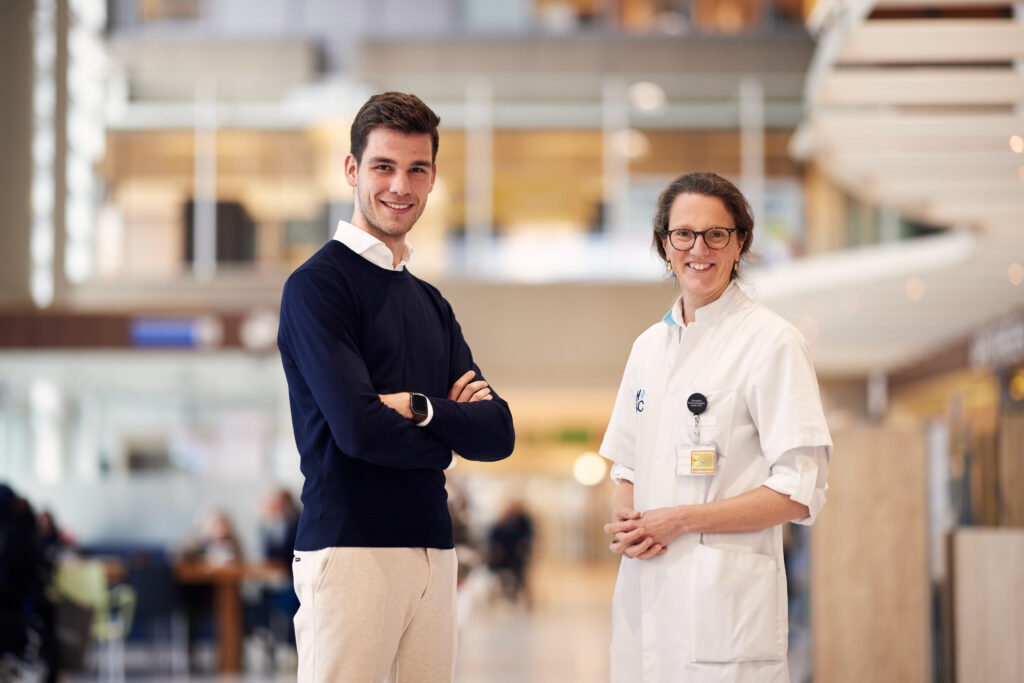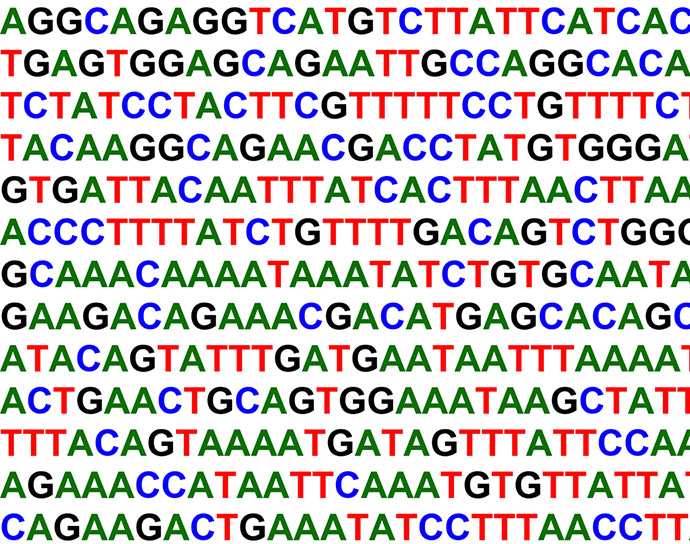Whole Genome Sequencing feasible in clinical practice

Interim WIDE analysis gives researchers more confidence in a positive outcome. On 21 September 2020, Dr. Kim Monkhorst, who is a pathologist at the Netherlands Cancer Institute, presented the interim results of the WIDE study at ESMO 2020. Dr. Monkhorst is principal researcher in the WIDE study together with Prof. Gerrit Meijer. With these results in hand, he is confident enough to promote Whole Genome Sequencing (WGS) as a safe, effective and fast practice. A physician can have the result of WGS within 12 days after taking the biopsy, and the technique has been validated in the clinical setting. This means that WGS can be used in routine diagnostic tests. Dr. Monkhorst explains the advantages of WGS.
“WIDE stands for WGS Implementation in standard Diagnostic tests for Every cancer patient. The Netherlands Cancer Institute, University Medical Center Utrecht and the Hartwig Medical Foundation are investigating the feasibility of Whole Genome Sequencing in standard diagnostic tests for patients with metastatic tumors. The aim is tailor-made treatment for as many patients as possible based on their unique tumor profile. The research is being funded by ZonMw and the Hartwig Medical Foundation. The interim analysis is based on data from the first 800 patients out of a cohort of 1,200.”
How does WGS benefit the patient?
All possible treatment options available based on a single test
“WGS analyzes the whole genome instead of just part of it, as current gene panels do. This test provides a complete picture of all DNA biomarkers in the tumor. These biomarkers play a key role in the choice of treatment strategy and allow the physician and the patient to make the best choice among all the possible treatment options.”
Additional treatment options
“Because WGS analyses the entire genome, it identifies options for treatments outside standard care, such as clinical trials. This provides the physician and the patient with insight into treatment options that may be available in the future. To date, we have seen that WGS identifies a treatment option in a quarter (25%) of patients for whom the standard diagnostic tests do not reveal any treatment options. In other words, these options would not have been revealed without WGS.”
WGS valuable for the patient of tomorrow
“Because a WGS test provides a complete and total picture, the data will still be relevant in the future. This makes it possible to build up a rich database that could be very valuable for the patient of tomorrow. The data generated with WGS could hence also be used in a self-learning healthcare system, whereby the newly generated knowledge can be added to the database and improve the effectiveness of the healthcare system every step of the way. The more data you have, the better you can predict what will work for patients down the road. The current gene panel tests are all different. They cannot be compared properly because they only overlap partially, so the results are much less suitable for research.”
Everything has been tested
“Another unexpected advantage of WGS is that both the physician and the patient can be sure that everything has been tested and that no treatment options have been overlooked. From my own experience, I know that patients often get distressed because they hear stories about all kinds of different tests. They are afraid they will not get the test that is right for them. With WGS the patient is reassured that everything has been tested.”
What are the consequences of WGS for the pathology profession?
No new gene panel tests required means huge time and energy savings
“Developing and validating a gene panel test can take up to a year. These panels must then be adapted and revalidated if new, relevant biomarkers are discovered. WGS covers all gene panel tests you can think of, and all existing biomarkers are detected.
This offers two distinct advantages. First, it is no longer necessary to validate and implement the biomarkers in each individual new panel. If new biomarkers are discovered, the software used to analyze the data can quickly be adapted to them. That saves a lot of time and effort.
Another advantage is that, as a pathologist, you no longer have to choose which test to request. With WGS everything is covered in one test, so you know for sure that you are doing the right diagnostic tests (‘first time right’), even if you are not completely sure what type of tumor it is.”
Primary tumor detected
“Diagnosing the specific tumor type is challenging and you are not always successful. Another unexpected advantage is that WGS data can often help to find out what type of cancer is involved and where it originated. By comparing the properties of the tumor with data in the database, you can see which profile the tumor fits. So far we have been able to identify the location of the original tumor in half of the cases where the diagnosis was unclear. This information is also important for the treatment strategy, which is why WGS also makes a valuable contribution in this area.”
Together we are stronger
“We work together with the bioinformaticians who design the software used to analyze the data, and we all benefit from this cooperation. For example, we normally use yet another test to detect viruses. When we asked the Hartwig Medical Foundation if viruses could also be detected using WGS, it turned out they could. They implemented this feature in the software for all relevant viruses within two months. This is a good example of how fast and effectively new biomarkers can be incorporated.”
What are the benefits of WGS for physicians?
“With only one test, the physician has all the biomarkers at their fingertips to determine the best possible treatment strategy together with the patient. This applies both to registered drugs and to potential new clinical trials. They do not have to carry out any additional tests which may also require new biopsies, and it is moreover not always clear exactly what biopsies to request. This can sometimes be quite complicated in clinical trials.
In addition to the greater variety of treatment options, it is nice to know that the results of the test will be available quickly. Soon physicians will receive the patient report within 12 days, making it easier to plan a consultation with the patient to discuss the results.”
Why isn’t WGS applied everywhere yet?
Frozen tissue instead of FFPE
“Pathologists use mainly formalin-fixed material in routine diagnostic tests. Frozen tissue is required to perform a WGS, and the quality requirements for the biopsy are more stringent. This means laboratories have to implement frozen tissue processing in their routine diagnostic tests. This study has revealed that this is eminently feasible.”
Turnaround times and clinical validation
“Before this study, it was not yet known whether WGS was possible within a clinically acceptable timeframe. Nor did we know whether the technique would be applicable to biopsies from routine diagnostic tests. Our study reveals that a WGS report can be provided to the physician within 12 days and that the technique is valid.”
Cost
“Given the aforementioned benefits of WGS, if the cost can be brought down to the same level as that of routine diagnostic tests, then WGS will be an attractive alternative for identifying treatment options. I trust this will happen. Not only is the cost of sequencing itself continuing to fall, but the price will also decrease as the test is used more.”
What do you think is going to happen next?
“In the short term, we at the Netherlands Cancer Institute are examining how we can integrate WGS in the standard diagnostic tests of patients who require a broad analysis. Examples are:
- Patients in whom a wide range of biomarkers need to be tested in the routine diagnostic procedure, such as in lung cancer.
- Patients who have no further treatment options according to the standard diagnostic tests and where biomarkers as part of clinical trials could provide new options.
In the near future, when the cost of WGS goes down, I hope that:
- Every patient in the Netherlands will be offered WGS as part of their treatment program.
- All genetic and clinical data will be incorporated in the national database, creating a self-learning healthcare system that will benefit the whole country. This database will help enormously to accelerate the development and validation of new biomarkers.”
Also read

Screening for T cells that already fight the tumor: Hartwig’s pipeline in practice
By Laura Nederveen In the search for more effective cancer treatments, Alena Gros and her team at Vall d’Hebron Institute …

GLOW: working toward more treatment options for glioblastoma
The outlook for patients with glioblastoma has been unfavorable for years, and treatment options remain limited. That is a reason …

SAGE: New algorithm for analysis of tumor DNA reveals mutations previously not found
At Hartwig we “analyse sequenced tumor DNA”. This is something we try to continuously improve. These analyses are shared with …

Cancers will increasingly meet the definition of ‘rare’ in terms of the molecular profiles that make each tumor unique. The more research we can do into this, the better we will be able to offer patients personalized treatment in the future. Whole Genome Sequencing and studies like DRUP are making an important contribution to this.